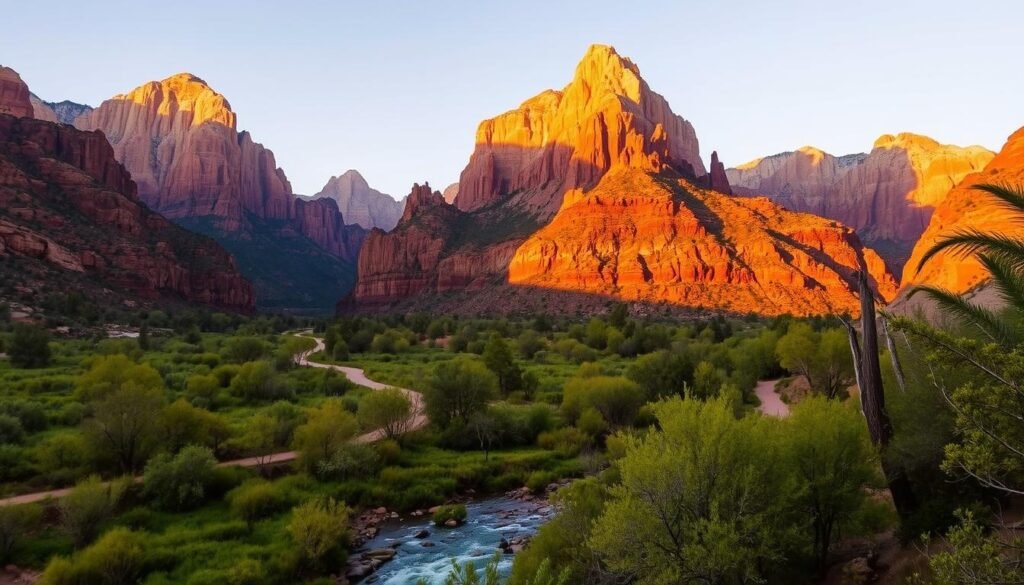Nearly half of visitors rely on park shuttles most days of the year, and parking lots often fill by 8 a.m., which changes how I plan every trip.
I wrote this short guide because small logistics make a big difference for comfort and safety. I’ll cover weather, holiday crowd spikes, shuttle rules, parking realities, and seasonal water levels for The Narrows.
Fall often wins for cooler temps and fewer crowds, while late winter and early spring can be quiet with trade-offs like limited services and higher water in slot canyons.
I flag must-know facts up front: the scenic road closes to private cars for most of shuttle season, entry is $35 per private vehicle for seven days (America the Beautiful accepted), and Watchman Campground books fast on recreation.gov.
Key Takeaways
- Use shuttles—lots fill early and private cars get restricted on the main corridor.
- Plan for fall if you want milder weather and fewer crowds.
- Reserve Watchman Campground on recreation.gov well in advance.
- Factor in permit rules and seasonal water levels for The Narrows.
- Entry is $35 per vehicle for seven days; an annual pass works too.
My quick take: When I plan the best time to visit Zion
When I plan a trip I balance forecasted weather, river flows, and predicted crowds before I book a single night. That short checklist shapes which trails I pick and how long I stay on them.
How I weigh weather, crowds, and water levels
I scan local forecasts and Virgin River gauges first. If water looks high, I skip narrow canyon routes and aim for rim hikes or paved walks instead. Early spring runoff can close some trails, so I plan alternates.
Time of day tactics: sunrise starts and late-afternoon strolls
- I arrive at dawn when parking still has space and lines are short.
- Or I aim for late afternoon; shuttles calm down and golden light improves photos.
- I make sure to check first and last shuttle runs so sunset plans do not strand me.
“Parking often fills by 8–9 a.m., so shifting your arrival can save hours of waiting.”
| Strategy | Why it helps | When I use it |
|---|---|---|
| Sunrise parking | Beat crowds and full lots | Short day trips or summer heat |
| Late-afternoon arrival | Calmer shuttles and better light | Photography days or flexible itineraries |
| Weather/water check | Avoid closed canyons and flash floods | Early spring and rainy periods |
Best time to visit Zion National Park
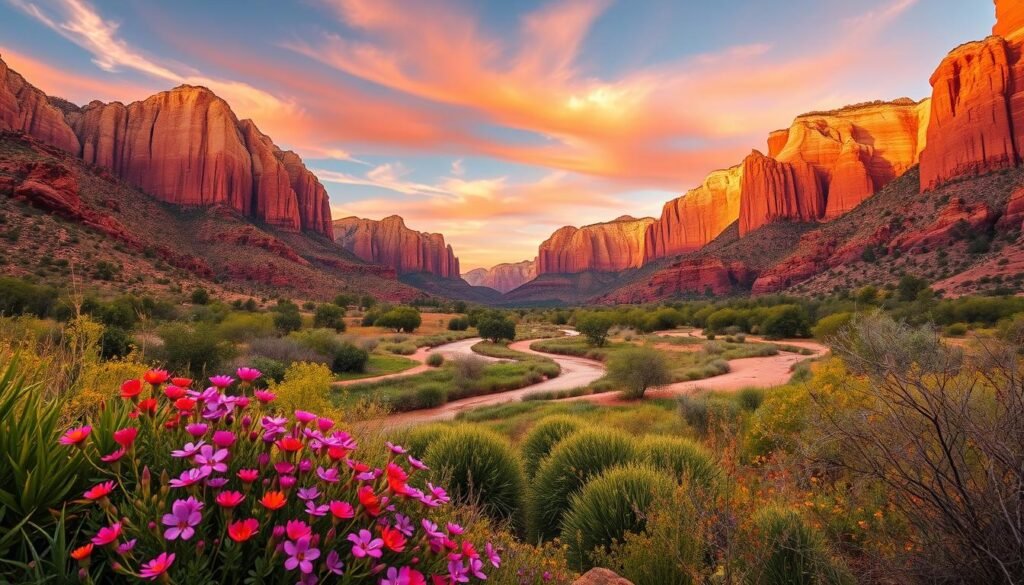
I choose travel windows that give me good light, cooler temps, and fewer people. Those factors decide which trails I pick and how I pace the day.
Overall winner: Fall for cooler temps and fewer crowds
Fall is my top pick. The weather turns comfortably cool, the light is excellent for photos, and crowds thin compared with summer’s crush.You can learn more best-time-to-visit-yosemite
Runner-ups: Early spring and late winter for quiet trails
Early spring and late winter often offer the quietest trails if I want solitude. Snowmelt can lift river flows and close some canyons, but I still find plenty of viewpoints, bike rides, and rim routes.
“Avoid weekends and holidays when possible; start at dawn or head out Sunday afternoon for calmer hours.”
- I shape fall weekend plans around dawn starts and Sunday afternoons to skip midday crushes.
- In spring I pack layers and plan alternates when slots are closed.
| Season | Perk | Trade-off |
|---|---|---|
| Fall | Cool temps, better parking | Shorter daylight |
| Early spring | Quiet trails, fewer crowds | High river flows, some closures |
| Late winter | Solitude and crisp air | Chilly mornings, icy spots |
Season-by-season guide to Zion’s weather, water, and crowds
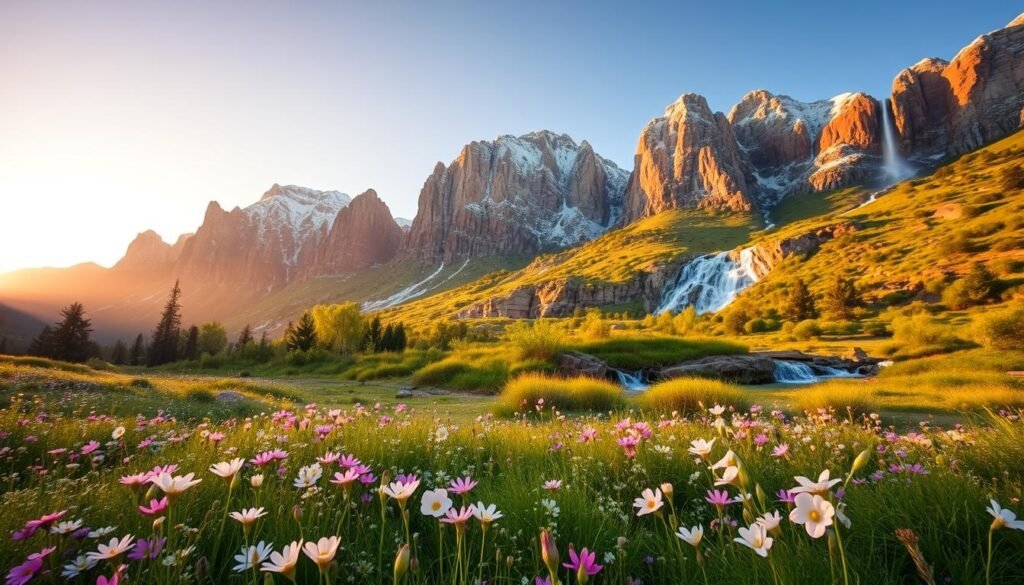
I match each season’s risks and perks to my goals before I lock in an itinerary. That small bit of planning keeps hikes enjoyable and safe.
Spring: snowmelt and shifting trail access
In spring the virgin river swells with snowmelt. Early runoff often makes canyon hiking difficult and can close The Narrows.
When water is high I pick paved paths or overlooks. I swap a canyon route for the Riverside Walk or rim viewpoints and keep my itinerary flexible.
Summer: long days, heat, and peak visitors
Summer brings long daylight and crowd peaks. Temperatures can spike toward triple digits, so I start at dawn and take long midday breaks.You can learn more best-places-to-visit-in-spain
I also allow extra time for shuttle lines and busy trailheads. If I need space, I choose longer routes where crowds spread out.
Fall: steady weather and thinner weekend crowds
Fall gives me the most comfortable hiking weather. Weekends feel calmer than summer, and golden light makes the canyon glow.
My fall rhythm: crisp mornings, long stops for photos, and early sunsets that improve views.
Winter: quiet trails and flexible plans
Winter is about serenity and sharp air. Trails are quieter and stargazing is excellent, but I watch for icy patches and shorter daylight times.
Across all seasons, some routes close for rockfall, maintenance, or runoff, so I always check same-day updates before I set out in zion national.
- Packing tip: sun protection and electrolytes for summer; insulating layers for winter.
- Planning tip: match your goals—photography, solitude, or family strolls—with the season’s strengths.
“Plan around river flows and forecast changes; a flexible hike list saves the day.”
Crowds and peak times: Holidays, weekends, and school breaks
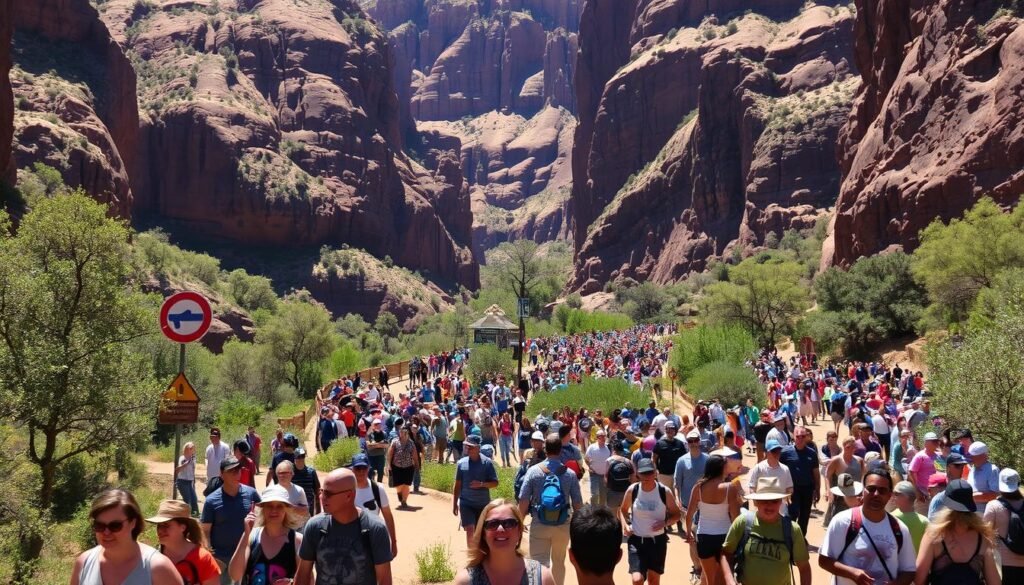
Crowd patterns shape every itinerary I plan for the canyon corridor. Major holidays push more people into the park, and I adjust my route and schedule accordingly.
- Memorial Day weekend and Labor Day weekend pack the most people. Lines start early and stay steady into late afternoon.
- Easter week and the UEA break in October can surge visitors even in shoulder seasons. I shift must-do stops to quieter windows.
- Parking often fills by 8–9 a.m., so I either arrive before 7 a.m. or roll in after 3 p.m. when spots free up and bus lines loosen.You can learn more best-places-to-visit-in-europe
Weekday vs. weekend: How I plan multiple days to beat the rush
I use weekdays as my secret weapon. When school is in session, there are fewer families and shorter waits.
I map a two- to three-day plan that hits key viewpoints midweek. Then I save lesser-known corners for the weekend when folks flood the main corridor.
- Practical plan: do signature stops on weekday mornings and reserve Saturday or Sunday for wide-open vistas like Kolob Canyons.
- I lean on the first and last shuttles to stretch my hours and capture quiet moments at popular overlooks.
- When dates are peak, I plan fewer stops and linger longer at each one. That keeps the trip fun despite lines.
“Booking Springdale lodging gives me quicker morning entry and a calm exit on crowded nights.”
Final note: patience and kindness go a long way. A positive attitude makes packed days better for your group and for other visitors.
For seasonal planning details and ideal arrival windows, I also consult a local guide: Zion timing and advice.
Shuttles, parking, and the scenic drive: How I move around the park
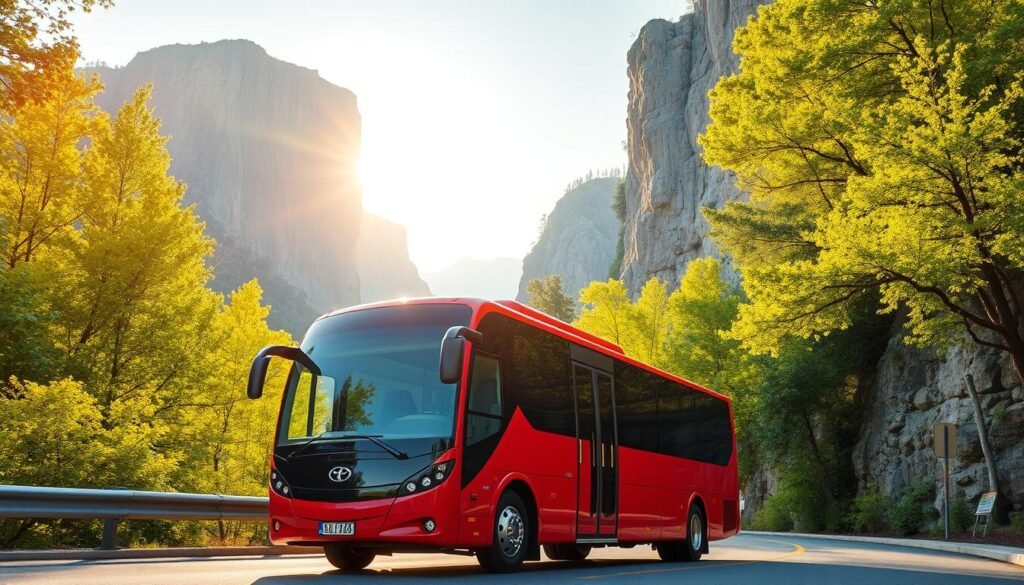
How I get around matters more than most visitors expect. Zion operates two systems: a Springdale line to the entrance and an in-park line along the canyon. I plan transport first because it shapes every stop I make.
Parking fills by 8–9 a.m.: My arrival and departure strategy
My rule: arrive before 7 a.m. or come after 3 p.m.
This avoids the worst parking rush. If I stay at Watchman, I stroll to the first runs and skip long lines at the gate.
Using the shuttle vs. biking the scenic drive
I weigh speed and flexibility. A shuttle ride is hands-free and lets me relax. Biking gives photo stops and quieter access in May when the scenic drive is closed to cars.
Bike etiquette: single file, helmets on, yield to buses, and ride in groups of six or fewer.
Key shuttle stops I use for hikes and viewpoints
- Visitor Center — my base for maps and info.
- Canyon Junction — quick access to trailheads.
- Court of the Patriarchs and Big Bend — short hikes and views.
- Temple of Sinawava — trail access to Riverside Walk and The Narrows approaches.
“I always check first and last bus times and keep mind sunset so I don’t get stranded.”
| Move | When I use it | Why |
|---|---|---|
| Early drive-in | Before 7 a.m. | Secure parking and short lines |
| Shuttle | Peak months | Convenience and frequent stops |
| Bike | May or when roads close | Photo stops and solo pacing |
Quick tip: make sure you carry water and sun protection between stops; the canyon heats up faster than it looks.
Where I go to escape the crowds: Kolob Canyons, East Zion, and beyond
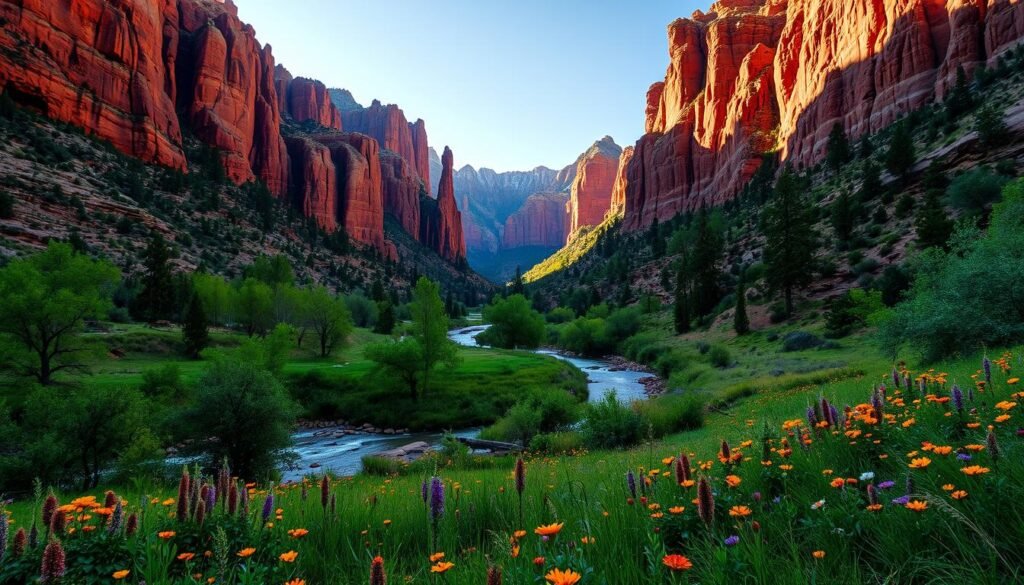
When I need peace away from the canyon people, I drive northwest and let the quiet set the pace.
Kolob Canyons is my go-to for roomy viewpoints and fewer lines. I often hike the Middle Fork of Taylor Creek to Double Arch Alcove with family. The route is friendly and full of distinct scenery.
I spread my hiking over two days when I can. That pace lets me savor the calm and avoid the busiest hours in the main corridor.
East side escapes and mellow rides
East Zion offers quieter rock textures and carved pools near city limits. Some summer pools dry, but kids love the slickrock and shallow play spots.
I also ride the Pa’rus Trail and the canyon road early or late for a car-free feel. Bikes are allowed, helmets required, ride right, and groups must stay under six.
“Combine a Kolob morning with a sunset in the main canyon — it balances serenity with classic views.”
- I pick longer, less-famous trails when I want solitude.
- I pack a picnic and hunt for shaded spots near zion but away from hot focal areas.
- Download maps before you go; signal drops between sections and road time matters.
Leave No Trace guides my choices on lighter-use routes. Staying on durable surfaces keeps these escapes pristine for future days.
Seasonal hikes and permits: Angels Landing, The Narrows, and more
![]()
Permit rules and water levels shape my hike plans more than I expect. This short guide helps me pick safe, rewarding routes and avoid surprises on busy days.
High-water season: Riverside Walk when The Narrows is closed
In spring, snowmelt can swell the virgin river and close The Narrows. When that happens, I head for the riverside walk.
The flat path keeps me close to the canyon views while staying safe from strong flows and crowded bottlenecks.
Angels Landing permits and Scout Lookout alternatives
Angels Landing needs a permit via an advance lottery or a day-before draw. If I miss out, Scout Lookout and the West Rim still give great exposure without the chain section.
The Subway: permits, skills, and route choice
The Subway top-down is technical, long (about 9.5 miles), and requires ropes plus a hard permit. The bottom-up route also needs a permit but skips rappelling. I only recommend it for experienced people or guided parties.
Family favorites: Emerald Pools and Canyon Overlook
For family outings I pick Emerald Pools and Canyon Overlook. Both reward with big views and modest effort.
- Trail etiquette: step aside at narrow spots, yield uphill hikers, and keep groups tight so everyone moves safely.
- Pacing tip: start a marquee hike at dawn, then switch to quieter trails after mid-morning crowds peak.
- Packing for spring: layers, traction if icy patches linger, and same-day trail checks save time and stress.
“Celebrate small moments — a quiet bend in the river or a shady alcove often beats summit selfies.”
| Route | Permit | Notes |
|---|---|---|
| The Narrows | No (access may close) | High water closes slots in spring |
| Angels Landing | Yes | Advance or day-before lottery for chains |
| The Subway | Yes | Top-down = technical; bottom-up = non-technical but strenuous |
Where I stay and how long I visit
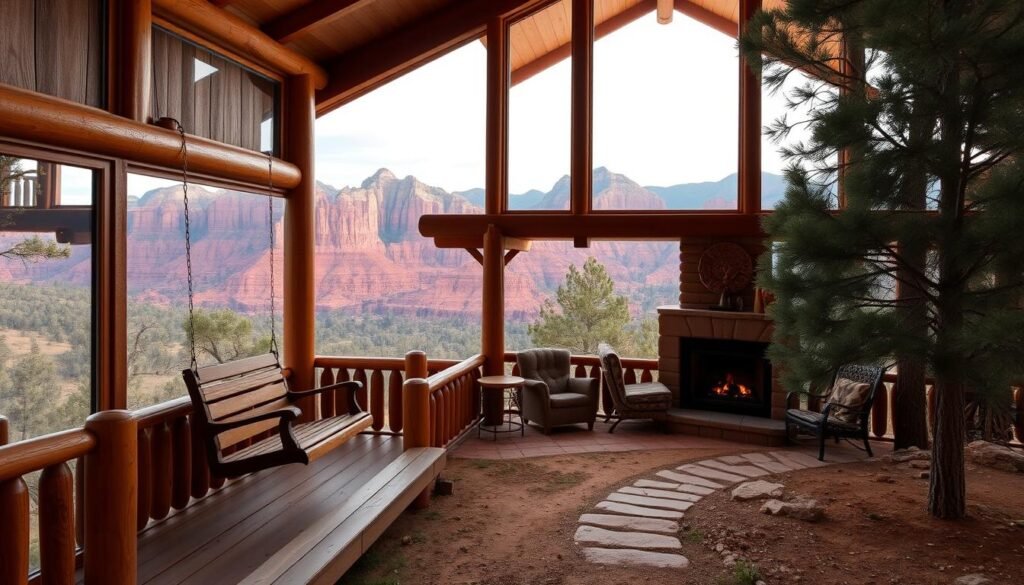
Where I set up camp or book a room changes the rhythm of each morning and evening. I plan lodging first because it affects shuttle access, drive time, and how many hikes I can realistically do.
Watchman, Springdale, and nearby towns
Watchman Campground is my go-to when I visit zion national because it’s the closest in-park option. I reserve a site on recreation.gov well before travel—spots fill fast.
If Watchman is full, I book in Springdale for easy shuttle access. For lower rates or extra options I check St. George, Hurricane, and Kanab near zion and accept a bit more driving.
How many days I plan
I use 2–3 days for a highlights trip: one marquee hike and a scenic bike or riverside stroll. That works well for first-timers and family groups with limited days.
For a deep dive I stay 4–5 days. That lets me chase sunrise shots, fit permit routes, and include a relaxed afternoon break.
- Budget picks: BLM dispersed sites such as Kolob Terrace, Sheep Bridge, and Gooseberry Mesa offer free camping if you follow leave-no-trace rules.
- Booking priorities: reserve lodging, permits, and bike rentals early in peak months.
- Family tip: schedule a pool or playground break in town to keep kids happy between hikes.
“I factor the $35 entry fee per vehicle (or an America the Beautiful pass) into my trip budget alongside permit and rental costs.”
| Stay type | Pros | Cons |
|---|---|---|
| Watchman Campground | Inside the park; short shuttle walk | Books quickly; needs recreation.gov reservation |
| Springdale hotels | Comfort, dining, shuttle access | Can be pricier during peak months |
| Nearby towns (St. George/Hurricane/Kanab) | More options, often cheaper | Drive time to the gate |
| BLM dispersed camping | Low-cost, scenic spots | Minimal facilities; requires self-sufficiency |
Packing nudge: I never forget headlamps, layers, a water filter, and sun gear—small items that make any stay, short or long, much smoother.
Conclusion
I end with practical habits that make a day in the canyon feel calmer and safer. Fall usually gives the best balance: milder temperatures, fewer crowds, and glowing sandstone at golden hour.
Pick smart windows within the times year, arrive at dawn or late day, and shape your route around shuttle rhythms rather than fighting them. In spring you can still find plenty to love even when The Narrows is high; the Riverside Walk and rim viewpoints keep the canyon magic alive.
Watch holiday spikes (Memorial Day, Easter week, Labor Day, the October break), book permits and bike rentals early, and respect parking limits and shuttle runs. Stay safe: check weather, sip water, and pack layers. Be kind on narrow trails — small courtesies help everyone.
Use this guide as a way to move through Zion with confidence, then come back another season. For official seasonal details see seasonal planning.


